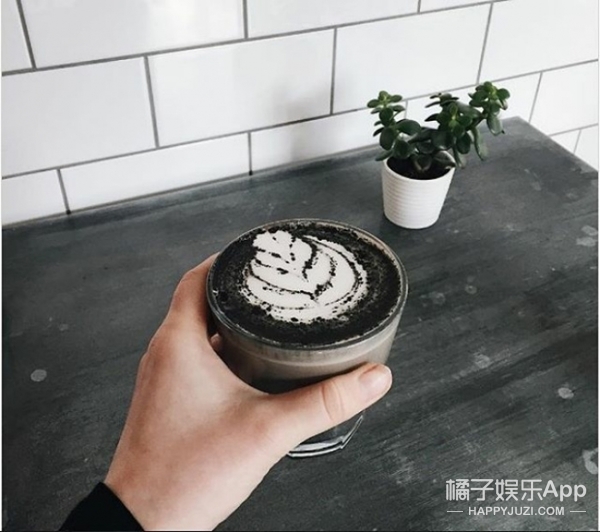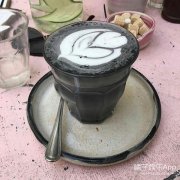Sidamo Shakiso correctly drinks French Shakiso Coffee Bean Price

Professional barista communication, please pay attention to coffee workshop (Weixin Official Accounts cafe_style )
A few things to note:
a) Gr-1 for both washing and solarization, provided that "zero" defects and Premium Cup. Whether washed or sunburned, Gr-1 is a rating for Fine of Fine or Cup of Excellence coffee.
b) The lowest grade of sun-exposed snow and Sidama is Gr-4.
c) Beans of the same grade, e.g. Rim Gr-2, are good or bad depending on the exporter's sorting level and inputs.
d) More than the existing "zero" defect requirement, Gr-1 beans (both washed and sun-dried) are extremely rare because of the high processing costs and few suppliers will do it.
Factory Name: Dazhen Coffee Front Street Cafe Address: No. 10 Baoan Front Street, Guangzhou City Factory Contact: 020-38364473 Ingredients List: Self-baked Shelf Life: 90 Net Content: 227g Packaging: Bulk Coffee Bean Ripe Degree: Coffee Ripe Bean Sugar: Sugar Free Origin: Ethiopia Coffee Type: Other Roasting Degree: Mild Roasting
Ethiopian Sidamo Shakisso Washed
Country: Ethiopia Fiscal year: 2003
Grade: G1
Production area: Chachisot production area in Guji District
Degree of roasting: Light roasting
Treatment method: washing
Washing-type coffee flavor is less likely to have wild flavor, with pure, refreshing characteristics, suitable for City to Full City roasting degree; some excellent Ethiopian washing-type coffee beans, sometimes can be perceived as obvious lemon, citrus essential oils, jasmine flowers, honey flavor, etc., sour more obvious, mellow feeling thin.
Hand-washed Sidamo. 15g powder, medium fineness grinding (small Fuji ghost tooth knife 3.5 grinding), v60 filter cup, 91-93 ℃ water temperature, the first injection of 30g water volume, 27 seconds stewing, injection to 105g water volume cut off water, wait for the powder bed water volume to drop to half, then slowly inject water until 225g water volume, the tail section does not, water powder ratio 1:15, extraction time 2:00
Ethiopian Sidama is a type of Arabica coffee of single origin, grown in Sidama province of Ethiopia. Like most African coffees, Ethiopian sidamo is characterized by small grey beans, but is characterized by its rich, spicy, alcoholic or chocolate-like flavor and floral aroma. The most distinctive flavors found in all Sidamo coffees are lemon and citrus, bright and crisp acidity. Sidamo coffee includes Yirgachefe and Guji coffee, both of which are of excellent quality.
Breed: Native species Heirloom
Producer: Local smallholder farmers
Flavor: White grape juice, citrus, Earl Grey
[Sidamo]
Sidamo coffee has a wide variety of flavors, as different soil compositions, regional microclimates, and numerous native coffee varieties create distinct differences and characteristics in the coffee produced in each town area. Sidama is located in southern Ethiopia. The industry here is dominated by agriculture, with coffee-growing areas located around the Great Rift Valley.
[Factory introduction]
Shakisso/Shakiso is located in the Guji region of Sidama, south of Oromia, next to Sidama and Gedeo. There are many mines in this area, which were used for gold mining in the early days, so there are many potholes in this coffee-growing area. This makes it dangerous to walk between coffee-growing areas. Chachoso is a region of Gugi/Sidamori alone trees, and even Sidamori is a remote area away from most coffee producing areas, where another famous product is gold mining. Miners, land and ethnicity also contributed to regional unrest in 2006. Therefore, the biggest problem facing this area now is the need for manpower to maintain the growing area and harvest coffee.
Local smallholders in the area began growing organic coffee in 2001 and work closely with medium-sized coffee producers who know how to grow forest coffee in the upland. It is one of the micro-production areas with very regional characteristics in the Sidamo production area. The coffee produced in this region is quite unique, and the coffee produced has repeatedly received market attention. Ninety Plus 'legendary bean (nekisse) originally means Nectar from shakisso, and its production area and name are all from shakisso.
Flavor description: lemon and citrus, bright crisp acidity, lemon, citrus, white grape juice, blackcurrant, Earl Grey tail
Indonesian and African coffee beans adopt this grading method according to the proportion of defective beans. Indonesian beans are mainly divided into 6 grades, namely G1-G6. The highest grades of water-washed beans are G1 and G2; the highest grades of sun-dried beans are G1 and G3.
What does that mean? As follows:
Washing: Grade-1;Grade-2 (G1>G2)
Sunlight: Grade-1 and Grade-3--Grade-5 (G1>G3>G4>G5)
Important Notice :
前街咖啡 FrontStreet Coffee has moved to new addredd:
FrontStreet Coffee Address: 315,Donghua East Road,GuangZhou
Tel:020 38364473
- Prev

Sidamo Shaquiso flavor describes which brand of Shakiso coffee is good.
For the exchange of professional baristas, please follow the Coffee Workshop (Wechat official account cafe_style) hand-made Sidamo. 15g powder, medium fineness grinding (small Fuji ghost tooth cutter 3.5grinding), v60 filter cup, 9193 degrees water temperature, 30g water injection for the first time, steaming for 27 seconds, water injection to 105g water cut off, wait for the powder bed water to drop to half and then water injection, slow water injection until 225g water, the end section is not
- Next

Sitama Charkiso Taste Aroma Charkiso Coffee Types and Prices
Professional barista communication Please pay attention to coffee workshop (Weixin Official Accounts cafe_style ) Flavor description: lemon and citrus, bright and crisp acidity, lemon, citrus, white grape juice, black currant, tail Earl Grey tea Indonesian, African coffee beans adopt this grading method according to the proportion of defective beans, Indonesian beans are mainly divided into 6 grades, namely G1G6. The highest grades of washed beans are G1 and G2;
Related
- Detailed explanation of Jadeite planting Land in Panamanian Jadeite Manor introduction to the grading system of Jadeite competitive bidding, Red bid, Green bid and Rose Summer
- Story of Coffee planting in Brenka region of Costa Rica Stonehenge Manor anaerobic heavy honey treatment of flavor mouth
- What's on the barrel of Blue Mountain Coffee beans?
- Can American coffee also pull flowers? How to use hot American style to pull out a good-looking pattern?
- Can you make a cold extract with coffee beans? What is the right proportion for cold-extracted coffee formula?
- Indonesian PWN Gold Mandrine Coffee Origin Features Flavor How to Chong? Mandolin coffee is American.
- A brief introduction to the flavor characteristics of Brazilian yellow bourbon coffee beans
- What is the effect of different water quality on the flavor of cold-extracted coffee? What kind of water is best for brewing coffee?
- Why do you think of Rose Summer whenever you mention Panamanian coffee?
- Introduction to the characteristics of authentic blue mountain coffee bean producing areas? What is the CIB Coffee Authority in Jamaica?

